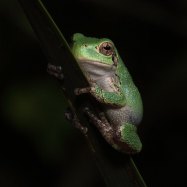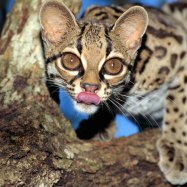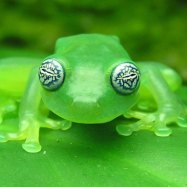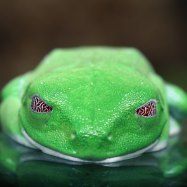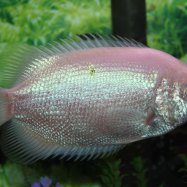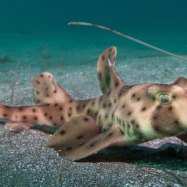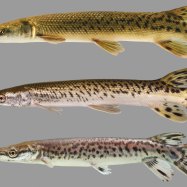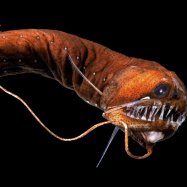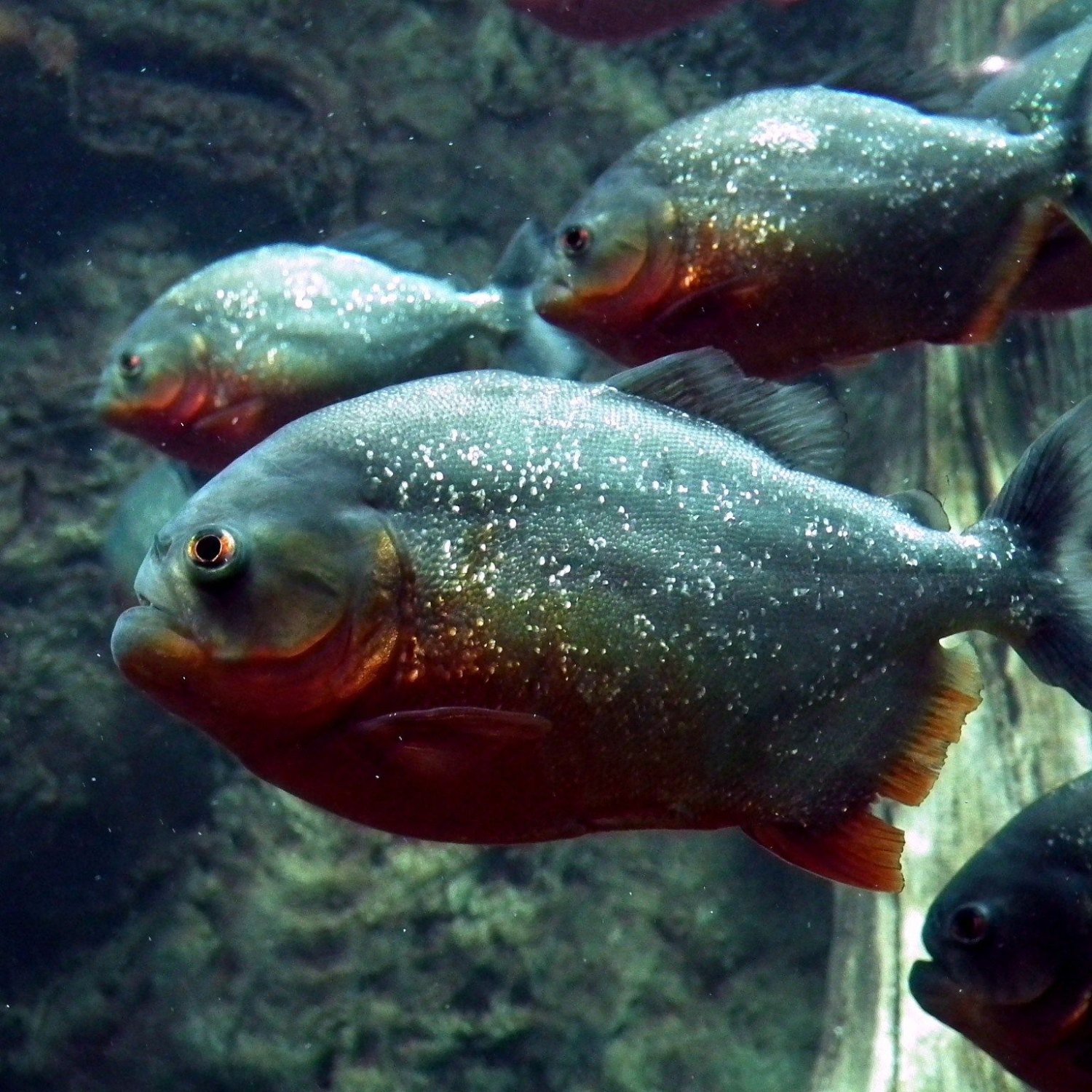
Piranha
Up to 30 centimeters (12 inches)
> Piranhas are small, carnivorous fish found in the Amazon River Basin. They belong to the Serrasalmidae family and can grow up to 30 centimeters in length. With their sleek and streamlined body shape, they are agile predators known for their sharp teeth and swift movements. Despite their fearsome reputation, they play an important role in maintaining the balance of their ecosystem.
Animal Details Summary:
Common Name: Piranha
Kingdom: Animalia
Habitat: Freshwater rivers, lakes, and floodplains
The Mighty Piranha: A Carnivorous Wonder of the Amazon River Basin
The Amazon rainforest has always been a symbol of mystery and danger. It is home to some of the most unique and diverse animal species on the planet. Among them, the Piranha stands out, known for its ferocious reputation and sharp teeth. These freshwater fish have fascinated and terrified people for years, with their presence evoking images of a voracious predator that can strip its prey down to the bone in mere seconds Piranha. But how much of this is actually true? It's time to uncover the truth behind this infamous creature – the King of the Amazon River Basin.The Basics: Classification and Habitat
To begin with, let us explore the basics of this fascinating fish. Scientifically known as Pygocentrus nattereri, the Piranha belongs to the Animalia kingdom, with a chordate body structure and belonging to the Actinopterygii class. They are part of the Characiformes order and are from the Serrasalmidae family. With a length of up to 30 centimeters (12 inches), they are relatively small in size but make up for it with their formidable reputation.Piranhas are native to South America, specifically Brazil, Argentina, Paraguay, and Bolivia. However, they are most commonly found in the Amazon River Basin. This vast and complex ecosystem provides the perfect habitat for these freshwater fish to thrive. Here, they inhabit the slow-moving rivers, lakes, and floodplains, where they can find their preferred prey Pinfish.
Appearance and Body Structure
At first glance, the Piranha may appear to be just another fish, but upon closer inspection, it is evident that they are uniquely adapted creatures. They have a sleek, streamlined body shape, which allows them to move through the water with ease, making them quick and agile predators. Their bodies are muscular and flat, with a slight curve towards the tail, giving them a more hunched appearance.One of their most distinctive features is their sharp teeth. Piranhas have strong, pointed teeth that are interlocked, forming a powerful bite. This feature is vital in their carnivorous diet, as we will explore in the next section. In terms of coloration, they have a silver body with a yellowish underbelly. This coloration allows them to blend in with the murky water and provides camouflage against potential predators.
Carnivorous Diet and Feeding Method
It is no secret that Piranhas are carnivorous creatures, but what exactly do they eat, and how do they catch their prey? Contrary to popular belief, Piranhas are not mindless feeding machines that swarm and devour every living creature that crosses their path. They are strategic hunters that use their intelligence and teamwork to secure their next meal.Piranhas feast on a variety of prey, including small fish, insects, crustaceans, and even larger animals like birds, mammals, and other fish. Their sharp teeth are ideal for tearing through flesh and crushing bones, allowing them to consume their prey quickly and efficiently. They also rely heavily on their sense of smell and hearing to detect potential prey, as their vision is not as refined.
Interestingly, Piranhas have a unique feeding method that involves surrounding their prey and then attacking in a coordinated manner. This technique allows them to overpower their prey, making them successful predators. As a defensive mechanism, they often travel in schools, so they outnumber their predators and have a better chance of survival.
Myths and Misconceptions
For years, Piranhas have been portrayed as savage, man-eating fish, responsible for countless attacks on humans. However, the truth is that Piranhas are not the monstrous creatures they are made out to be. In fact, only a handful of attacks on humans have been reported, and those often involve humans interfering with their natural habitat.Furthermore, Piranhas are not indiscriminate killers. They do not feed on humans or large animals, as they prefer smaller prey that is easier to catch and consume. They are also not attracted to blood or ferociously attacking anything that moves. Instead, Piranhas are shy and reclusive creatures, typically avoiding human contact.
Threats and Conservation Efforts
One of the biggest threats to Piranhas is the destruction of their natural habitat. Deforestation and pollution have greatly affected the ecosystems where they live, leading to a decline in their population. Furthermore, overfishing and the introduction of non-native species have also negatively impacted Piranha populations in some areas.In response, conservation efforts have been put in place to protect Piranhas and their habitats. In Brazil, fishing quotas have been established to ensure sustainable fishing practices. Efforts are also being made to educate the public about the importance of preserving these creatures and their ecosystems.
Rising Popularity in the Pet Trade
Despite their fearsome reputation, Piranhas have become popular in the pet trade. Their striking appearance and unique behavior have made them a sought-after addition to home aquariums. However, it is essential to remember that Piranhas require specific care and a suitable environment to thrive. Inexperienced or ill-prepared owners may struggle to provide the necessary requirements, leading to unhealthy and stressed Piranhas.Conclusion: An Amazon River Basin Icon
The Piranha may be one of the most misunderstood creatures in the animal kingdom, but it is undoubtedly a fascinating and integral part of the Amazon River Basin. These carnivorous fish play a vital role in the ecosystem, maintaining balance and contributing to its diversity. While they may have garnered a fearsome reputation, the reality is that they are intelligent and sophisticated hunters, with unique adaptations that make them efficient predators. It is our responsibility to protect these creatures and their natural habitats, ensuring that they continue to thrive for generations to come.

Piranha
Animal Details Piranha - Scientific Name: Pygocentrus nattereri
- Category: Animals P
- Scientific Name: Pygocentrus nattereri
- Common Name: Piranha
- Kingdom: Animalia
- Phylum: Chordata
- Class: Actinopterygii
- Order: Characiformes
- Family: Serrasalmidae
- Habitat: Freshwater rivers, lakes, and floodplains
- Feeding Method: Carnivorous
- Geographical Distribution: South America
- Country of Origin: Brazil, Argentina, Paraguay, and Bolivia
- Location: Amazon River Basin
- Animal Coloration: Silver with yellowish underbelly
- Body Shape: Sleek and streamlined
- Length: Up to 30 centimeters (12 inches)
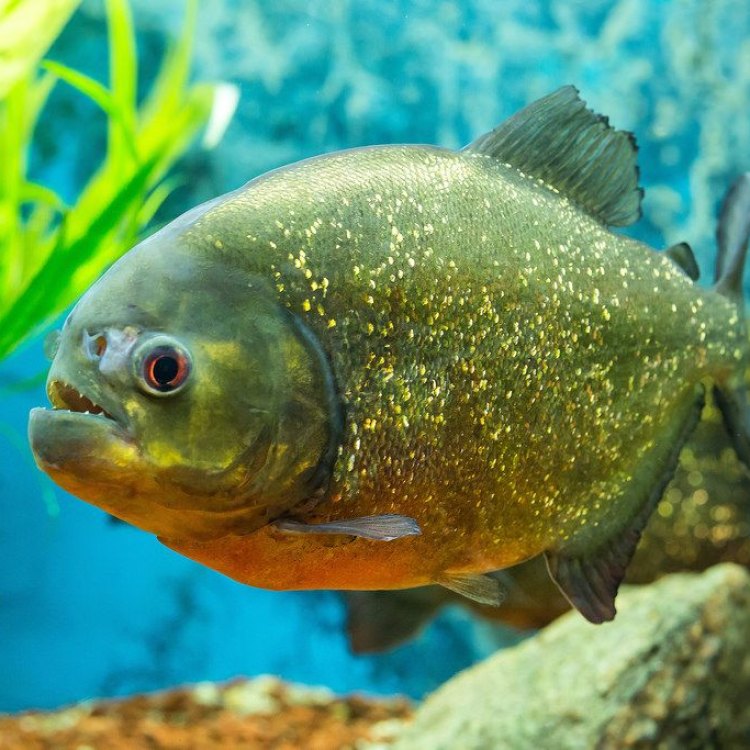
Piranha
- Adult Size: Up to 60 centimeters (2 feet)
- Average Lifespan: Up to 20 years
- Reproduction: Egg-laying
- Reproductive Behavior: Parental care
- Sound or Call: Not known for vocalizations
- Migration Pattern: No regular migration pattern
- Social Groups: Usually solitary but can form groups
- Behavior: Aggressive and territorial
- Threats: Habitat destruction and overfishing
- Conservation Status: Least Concern
- Impact on Ecosystem: Maintains balance in ecosystems by controlling fish populations
- Human Use: Food source and aquarium pet
- Distinctive Features: Sharp teeth and powerful jaws
- Interesting Facts: Piranhas have a fearsome reputation but are mostly scavengers and opportunistic feeders. They have been known to attack humans in rare cases.
- Predator: Rarely preyed upon by larger predators
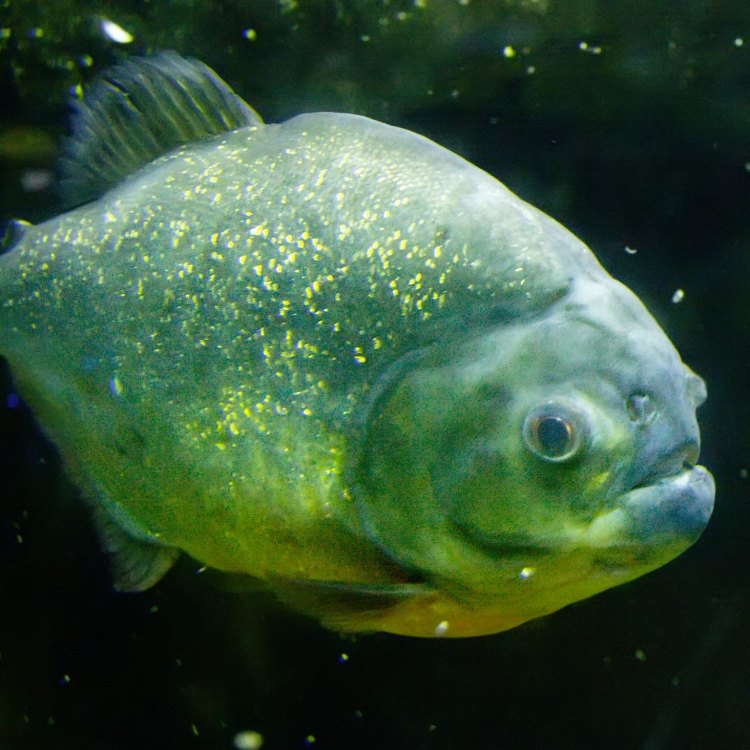
Pygocentrus nattereri
The Misunderstood Piranha: Beyond the Fearsome Reputation
When you hear the word "piranha," what is the first thing that comes to mind? For many, it is their sharp teeth and aggressive nature, depicted in countless books, movies, and TV shows as vicious killers. But is that really the whole story? In this article, we will delve deeper into the world of piranhas and discover the fascinating truth behind these infamous creatures.The piranha (Pygocentrus nattereri) is a freshwater fish native to South America, particularly the Amazon river basin. They are known for their sharp teeth and powerful jaws, which have earned them the reputation of being fearsome predators PeaceOfAnimals.Com. However, there is more to these fish than meets the eye.
The Basics
Piranhas belong to the family Characidae, which includes other fish species such as tetras and pirapitinga. They can grow up to 60 centimeters (2 feet) in length and have an average lifespan of up to 20 years. These fish are primarily found in warm, shallow, and slow-moving waters, where they can easily catch their prey.There are approximately 30 identified species of piranhas, and their appearance can vary depending on the species. Generally, they have a silver or grayish-silver body with red or orange markings on their sides, giving them their distinctive appearance.
Reproduction and Social Behavior
Piranhas are egg-laying fish, with females depositing their eggs on aquatic vegetation. These eggs will hatch in about a week, and the young piranhas will swim alongside their parents for a short period of time. What is interesting about piranhas is their reproductive behavior, specifically their parental care Parasaurolophus. While most fish species do not exhibit parental care, piranhas are known to fiercely protect their young and even build nests to shelter them.In terms of social behavior, piranhas are usually solitary but can form groups when food is scarce or during the breeding season. These groups are not permanent, and piranhas will often switch between being solitary and grouping together.
Aggressive and Territorial Behavior
One of the main reasons piranhas have gained such a fearsome reputation is their aggressive and territorial behavior. These fish have been known to fiercely defend their territory, attacking any intruder that comes their way. They have even been observed attacking bigger animals, such as caimans, in a group to defend their territory.Additionally, piranhas have sharp teeth and powerful jaws, which they use to crush and shred their prey. These teeth are constantly growing, and if one falls out, it is quickly replaced. This allows piranhas to keep up their feeding habits without any hindrance.
Impact on Ecosystem
Despite their reputation as fierce predators, piranhas play an essential role in maintaining balance in their ecosystems. They are opportunistic feeders, and their diet includes insects, plants, small fish, and even seeds. By controlling the population of smaller fish, piranhas help prevent overpopulation and maintain a healthy ecosystem.In fact, studies have shown that the absence of piranhas in certain areas has led to a decline in the overall health of the ecosystem. This highlights the important role piranhas play in their natural habitat.
Human Use and Threats to Piranhas
Humans have long been fascinated with piranhas, and they have been featured in numerous books, movies, and TV shows. However, they are also used by humans as a food source and as aquarium pets. In some parts of South America, piranhas are a popular food item and are even considered a delicacy.Unfortunately, human activities also pose a threat to piranhas. Habitat destruction and overfishing are the main threats to their survival. The rapid growth of human populations along the Amazon river has led to deforestation and pollution, which has had a significant impact on piranha populations.
Thankfully, the conservation status of piranhas is currently listed as "Least Concern" by the International Union for Conservation of Nature (IUCN). This is due to their widespread distribution and ability to adapt to changing environments. However, continued efforts are needed to protect their natural habitats and ensure their survival in the long run.
Interesting Facts
While piranhas have a fearsome reputation, there are some interesting facts about them that might surprise you.- Piranhas have not been known for vocalizations, and it is believed that they communicate through body language and chemical signals.
- Contrary to popular belief, piranhas do not typically attack humans. They are mostly scavengers and will only attack in rare cases when provoked or when food is scarce.
- Piranhas are rarely preyed upon by larger predators, as their sharp teeth and powerful jaws act as a defense mechanism. However, caimans, river dolphins, and some species of birds have been known to prey on piranhas.
The Misunderstood Piranha
In conclusion, piranhas are often misunderstood and misrepresented in popular media. While they are indeed aggressive and territorial creatures, their fearsome reputation does not accurately reflect their behavior in the wild. These fish play an essential role in their ecosystem and are not the mindless killers they are often portrayed to be.As humans continue to learn more about these fascinating creatures, it is crucial that we also take steps to protect their natural habitats and promote their conservation. Only then can we truly appreciate the unique features and interesting behaviors of the misunderstood piranha.
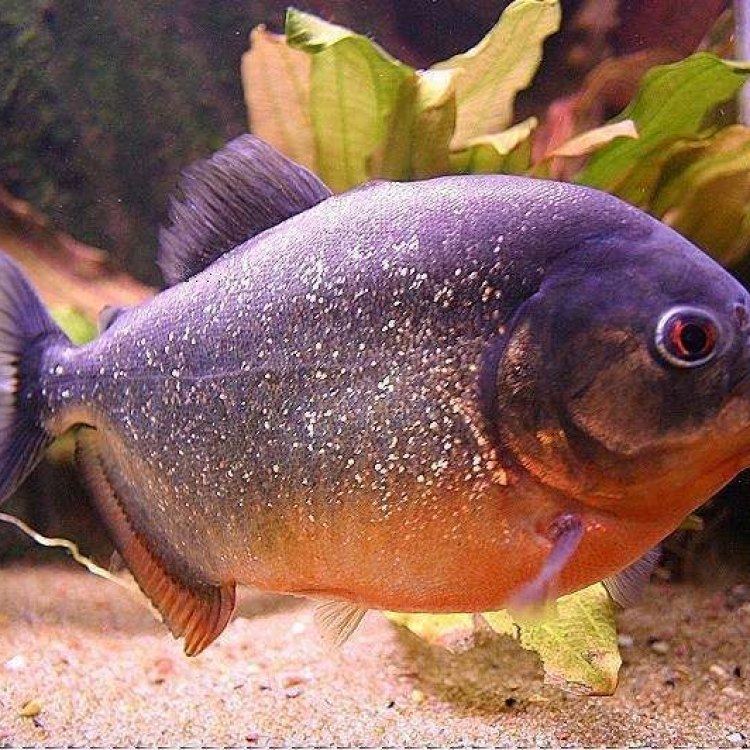
The Mighty Piranha: A Carnivorous Wonder of the Amazon River Basin
Disclaimer: The content provided is for informational purposes only. We cannot guarantee the accuracy of the information on this page 100%. All information provided here may change without prior notice.

